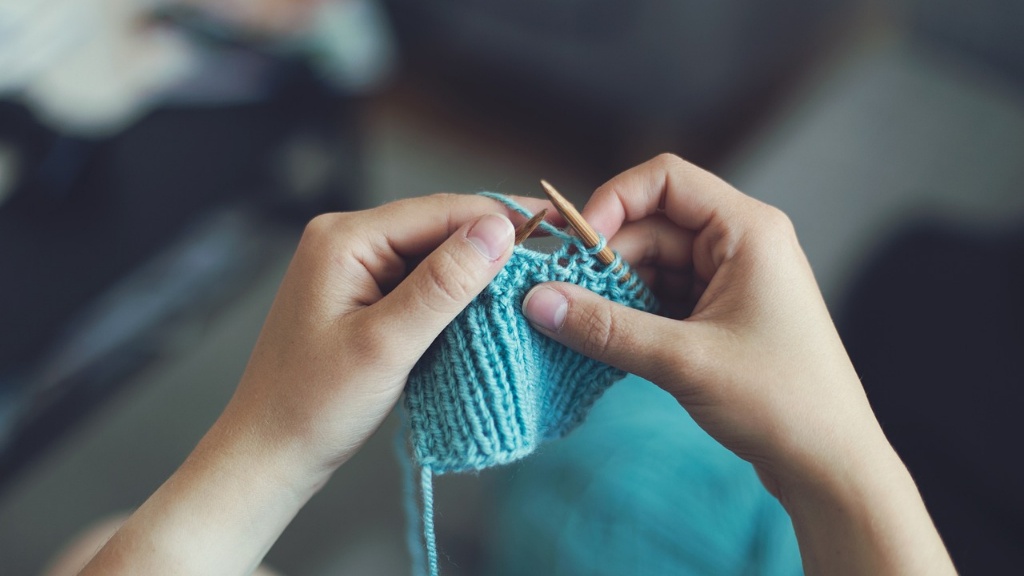Types of Sewing Machine Needles
When buying needles for a sewing machine, it’s important to pay attention to the type of needle needed. Sewing machine needles come in a variety of sizes, styles, and materials to suit the requirements of different fabrics and techniques.
The most common types of needles used in a sewing machine are universal, sharp, and ballpoint. Universal needles are designed to work with a variety of different fabrics, including woven and knit fabrics. They are also good for low-medium speed sewing machines as they don’t damage the material and reduce the tension in the thread.
Sharp needles are designed for woven fabrics and often used in quilting. They have a long and slim needlepoint, making them very sharp. This means they can penetrate tightly woven fabrics.
Ballpoint needles are designed to work with knit and stretch fabrics. They have a rounded needlepoint that helps push the yarn fibers of the fabric out of the way as it stitches. This helps reduce the chance of damaging the fabric.
Factors to Consider
Aside from the needle type, there are other factors to consider when selecting a needle, such as size and material. Sewing machine needles come in a range of sizes, usually between 9-18. When selecting a needle, it’s important to consider the tension and thickness of the fabric. For example, a thicker fabric might require a larger needle, while a thinner fabric might require a smaller needle.
The most common materials for sewing machine needles are steel and titanium. Steel needles are generally more affordable, but can wear out relatively quickly. Titanium needles are more expensive, but are known for their strength, durability, and sharpness.
Specialty Needles
In addition to the three main types of needles, there are also specialty needles for specific techniques and fabrics. For example, Hemstitch needles can be used to create decorative stitches on fabric. Embroidery needles are specifically designed for embroidery and have a sharp point that helps penetrate even the tightest of fabrics.
Twin needles are two needles attached to a single shaft and are used to create two parallel lines of stitching or decorative stitching. They are often used to create shades on knits, and are available in different sizes and styles to suit different requirements.
Replacement
It’s important to remember to replace the needle in a sewing machine when it becomes worn. A worn needle can cause damage to the fabric and affect the quality of the stitches. It’s recommended to replace the needle after 8-10 hours of sewing, or when the needle begins to feel rough.
Most sewing machines come with an instruction manual that includes information about the size and type of needles compatible with the machine. This can be a useful guide when selecting needles. It’s also important to use the correct type of needle for the fabric and technique.
Where to Buy
Needles for sewing machines can be bought from a variety of stores, including fabric and craft stores, as well as online retailers. When shopping for needles, it’s important to check the size and material to make sure it’s compatible with the machine and the fabric to be used.
Conclusion
Selecting the right needle is essential for producing quality stitches and achieving good results. It’s important to consider the type, size, and material of needles when buying them. There are a variety of specialty needles available for specific fabrics and techniques. It’s also important to remember to replace the needle when it begins to feel rough or after 8-10 hours of sewing.
Using the Right Sewing Machine Needle on Leather
When working with leather, it’s important to use the right type of needle on your sewing machine. Leather is a thick, heavy material that requires special treatment and is more likely to be damaged. When selecting a needle for leather, it’s important to consider a few things.
It’s best to use a heavy duty needle with a sharp point and a large eye. This will provide the optimum amount of penetration when stitching. Leather needles are generally larger than standard machine needles and come in a range of sizes from 14-18. The needle should be appropriately sized to the thickness of the leather being used.
For finer details on leather, such as topstitching, a sharp, round point needle is recommended. This type of needle has a rounded point that will make clean, precise stitches on leather without damage.
Other Considerations
When using a machine to sew leather, it’s important to adjust the tension of the machine appropriately. Leather is thicker than other fabrics and requires a higher tension setting to ensure the stitches are strong and neat.
Thread is also important when stitching leather. A heavy-duty polyester or cotton thread is best as they will provide extra strength. It’s also important to use high-quality thread as this will reduce the chance of fraying and breakage.
Finishing Touches
Once the leather is stitched, it’s important to apply a special leather finish in order to seal the edges. This finish will make the leather more durable and add shine and protection. It’s important to choose a finish that is specifically formulated for use on leather.
Safety First
It’s also important to take proper safety precautions when working with leather. Leather can be hazardous to health in a number of ways including dust particles, plant proteins, and available inks. It’s best to wear protective gloves and a respirator when working with leather and keep the area well-ventilated.


